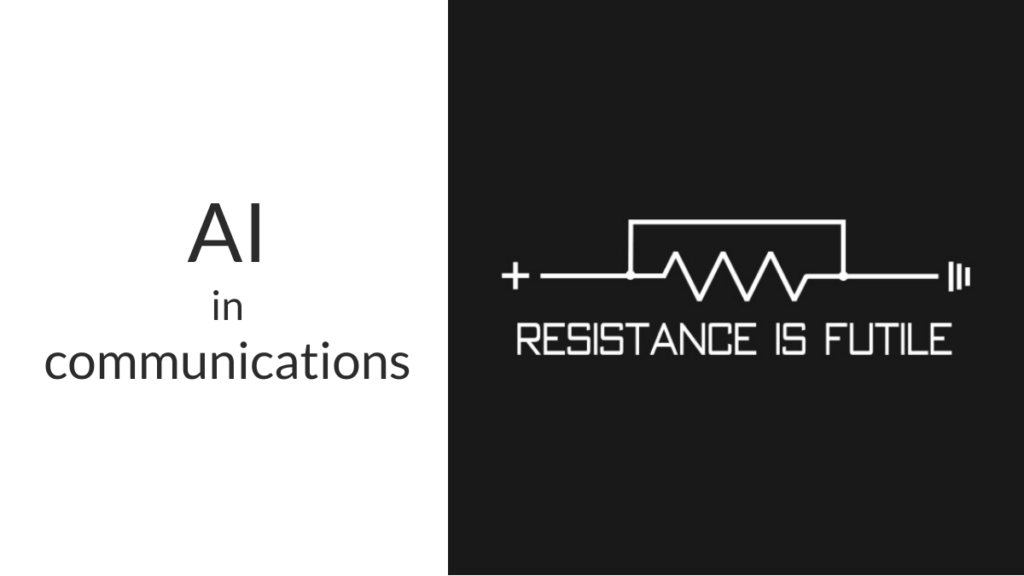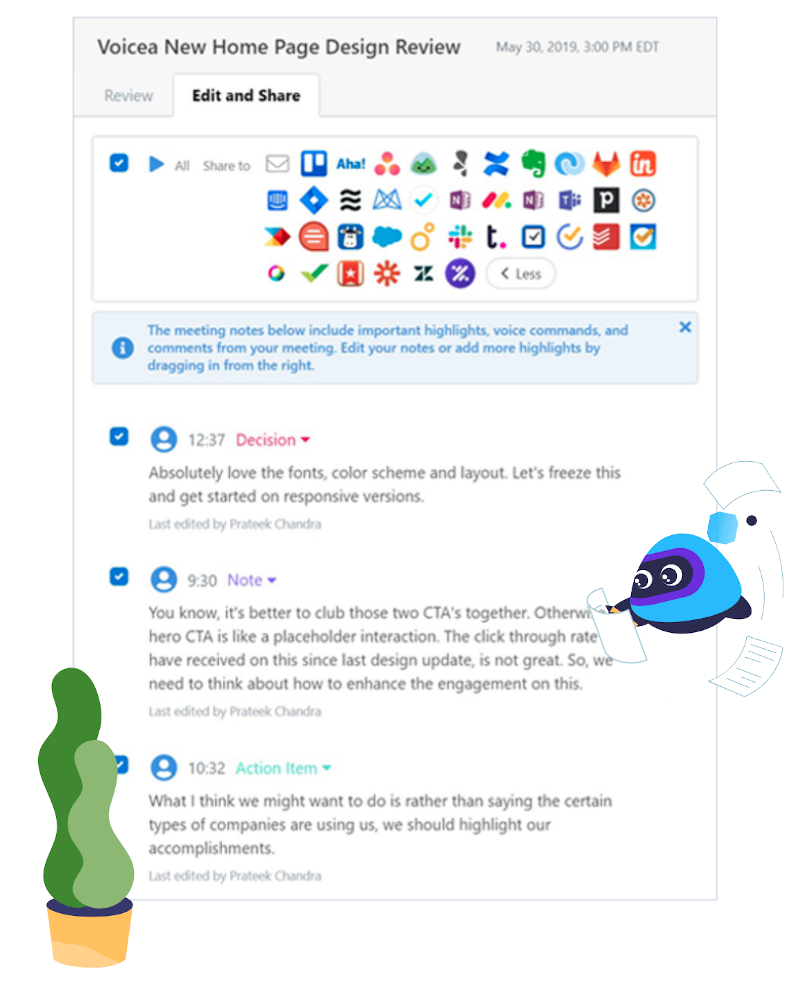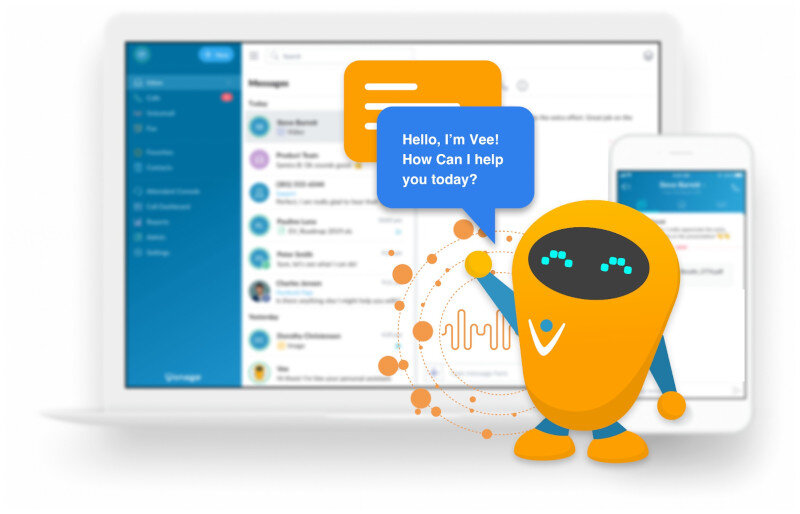Resistance is futile when it comes to AI in communications. Are you going to get there on your own or dragged there?

I’ve worked with Chad Hart last year on a unique report that covers AI in RTC. Since then, we’ve seen the trends we’ve analyzed in the report strengthen and take shape. Why did we start on that route? Because of an understanding that the use of machine learning and artificial intelligence will be part and parcel of the communications industry – simply because it is now penetrating all industries. The difference here, though, is that with communications this isn’t just about finding churn or optimizing workflows – it is about looking at the data itself – the communications – in real time.
One of the things we looked at and debated at length was how communication vendors are going to integrate AI into their own products. Are they going to have that done in house? Will they outsource that part? If they outsource, would that be outsourcing everything or just certain parts? Will they be using cloud based AI APIs for that. And if they do, would they go for Amazon, Google, Microsoft and/or IBM. Or would they rather go for smaller, more specialized vendors?
The answers were all over the place, and the main challenge was deciding how the future would look like. Me? I thought and still think, that a lot of that technology and experience must come in-house for vendors who want to keep an edge and a competitive advantage.
You can’t use third parties for a technology like AI and assume you will gain differentiation.
Why? Because everyone else will be doing the same.
Need proof?
A year ago, almost everyone we spoke to said they were experimenting or rolling out call summaries on recorded calls. How were they implementing that? By using Voicera (turned Voicea and acquired by Cisco. More on that later).
When Google introduced their Contact Center AI, everyone and his uncle partnered with them for the announcement.
How does that assist in differentiation? I don’t know.
During August, two interesting acquisition announcements took place on the exact same day:
Both acquisitions are in the communication space. Both acquisitions are around NLP/NLU capabilities (natural language processing and understanding).
Looking for better understanding of the AI space in communications? Check out the overview of our AI in RTC report
Cisco & Voicea
Voicea does two things:
- Offers transcription
- Captures decisions, notes and action items

The transcription part is usually referred to ASR (Automatic Speech Recognition) or NLP (Natural Language Processing). Dumbing it down a bit, this is speech to text capabilities.
The second part is about NLU (Natural Language Understanding). The “AI” or “assistant” is capable of reviewing what is said (usually on the textual level) and deducing from that what it means. In the case of Voicea and their EVA product, this is about the creation of meeting summaries and action items taking.
In many ways, this is similar to Dialpad’s acquisition of TalkIQ a year earlier.
Where do these two differ?
Cisco
From the press release, it seems that Cisco intends to wrap Voicea into WebEx, with a focus on collaboration. This means help facilitate meetings and conversations within an enterprise. As Amy Chang, SVP & GM, Cisco Collaboration states in the press release:
“Voicea’s true market leading technology will be a game changer for our Webex customers to experience more productive and actionable meetings”
Cisco’s approach stems from their focus on what they call “cognitive collaboration”. I am sure Voicea will find its way into the sales calls that Cisco enables for its customers, but first priority seems to be collaboration.
Dialpad
Dialpad focused on getting TalkIQ into its contact center offering, creating AI assistant to sales people and adding it to the unified communication offering that they have. In the acquisition press release, the initial capabilities mentioned are real-time call transcription, smart notes, real-time sentiment analysis for call center and real-time coaching.
–
Cisco decided to bring in-house the competency of NLP and NLU. It isn’t the first AI technology that Cisco is acquiring. It makes me wonder if they’ll keep the Voicea team independent, fold them under WebEx or wrap them into an AI team they already have (probably through a past acquisition).
Vonage & Over.ai
Vonage acquisition of Over.ai may seem somewhat similar to the Cisco acquisition of Voicea at first glance. Both acquired an NLP/NLU startup. Both plan on wrapping the tech into their communications offerings. Both acquired an AI team in a location close to one of their existing offices. But that’s where things start to look somewhat different.

Over.ai is focused more on voicebots that it is on just speech analytics. As such, it doesn’t seek to glean meaning, converting it into summaries and action items. It is geared towards understanding intents and “holding” a conversation between a human and a bot.
This requires knowledge and competencies in speech to text, text to speech, intent recognition and building something akin to Google’s Dialogflow (and the application logic on top of it).
What can Vonage do with such technology? Here are some initial thoughts and ideas:
- Offer its own transcription engine, across its product line (API for developers via Nexmo and TokBox, contact center via NewVoiceMedia and unified communications via Vonage Business Cloud
- Replace and/or augment IVRs across that same product offerings
- Create outbound calling bots, probably with a focus on NewVoiceMedia and maybe Nexmo
- Expand to other AI related challenges in the communication space
That last one is the most interesting.
The main challenge vendors have today with AI is finding experienced developers. Or more accurately, experienced employees. In this acquisition, Vonage got itself a complete team with expertise around communication related AI. this includes developers, testers, product managers, sales and marketing – the whole shebang. While we tend to focus on developers and their experience, AI has proven as a technology that needs all these added functions to be experienced in it as well.
This gives Vonage a nice head start in this, where others need to build such capabilities in house, or acquire them elsewhere (as Vonage did).
Communications + AI = Future
Dialpad has a really nice explanation of today’s state of AI in communications:
It is hard as hell and requires lots of customizations, so you can mostly use it at scale.
I believe that the interesting use cases are still ahead of us. And that many of them would require cracking the scaling issue – how to be able to deploy AI algorithms and models that can work well for small businesses and not only at the largest ones where customization and fine tuning is part of the process.
Looking for better understanding of the AI space in communications? Check out the overview of our AI in RTC report

Very informative!
What do you think are the other upcoming usecases for use of AI for communications?
Rizwan,
Lots of potential and challenges. This is why we’re written a full (albait paid) report about this domain.